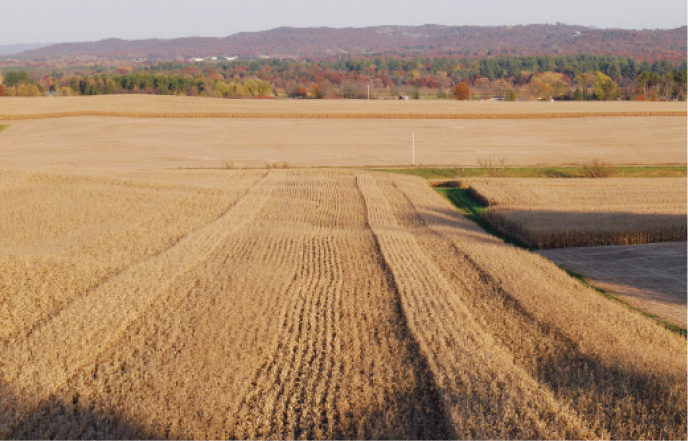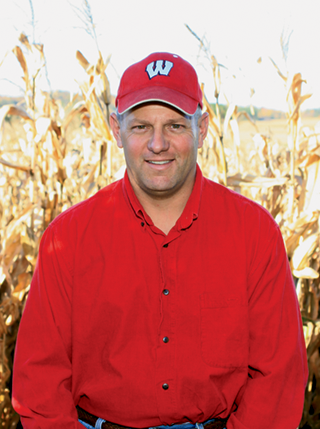Selecting the most appropriate seed can improve profitability immensely on your farm. But often this is a difficult decision because so many options are available.
For many years, I’ve relied on test-plot data from universities and seed companies as a basis for choosing corn hybrids and soybean varieties for our farm. This decision has become more complicated through the years.
Many times, these varieties and hybrids aren’t entered into university trials for an unbiased comparison.
Selection System
I’ve developed a system to select and evaluate seed for our farm.
I approach the selection process from three angles.
• First, I follow the university trials to pick out their top-yielding hybrids and varieties.
• Second, I go to my local seed representatives and ask them to pick out the hybrids and varieties that they feel will perform the best on my farm.
• Third, I use my precision-farming system to help me evaluate these university and seed company hybrids and varieties in replicated plots on our farm.
Normally, I will have about 20 corn hybrids and 20 soybean varieties in our farm plots. In selecting hybrids, I plant three or four hybrids I’ve used on the farm in the past year and then select 15 to 16 new hybrids from the seed companies and university test plots to evaluate in our plots.
Depending on how the hybrids perform, I generally keep about 60% to 65% of our acres in hybrids that have a track record on our farm, and plant about 35 to 40% of our acres to new hybrids. Sometimes, I’ll have a hybrid that will be the best performer in our plots for multiple years, so I will continue to plant it until a new one consistently outperforms the old one.
Selecting two or three of the top university hybrids and varieties for our plots provides us a direct comparison to the hybrids and varieties we select from seed companies.
We use at least three replications in all of our plots and generally have plots on two different soil types.
Randomize Precisely
Precision ag technology allows us to do plot work much easier since the guidance system allows us to replicate and randomize plots without having to change seed in the planter between each replication.
Normally, when doing plot work, it’s best to have three to four replications, which means you should plant each hybrid and variety at least three to four times in the plot to make sure the differences are statistically real.
Four replications is easier. This allows you to make two rounds with the planter and end up on the headland where you started to clean out the planter, which you split between two different hybrids or varieties.
The other rule in plots is to randomize the planting order of each replicated block so the seed isn’t planted in the same order throughout the field.
Using GPS guidance makes this much easier. For example, you can load your planter with two hybrids and plant all the replications by moving to the appropriate swath for each of the following four replications.
If you have 12 hybrids in a plot replicated four times, you will have six swaths of two hybrids for each replication for a total of 24 swaths.
Swaths 1 to 6 will be your first replication block, swaths 7 to 12 block 2, swaths 13 to 18 will be block 3 and swaths 19 to 24 will be the replications in block 4.
With a guidance system, you can set your A-B line when planting the first swath. By setting the A-B line in the first pass, you can set up the next 23 passes — six passes in each block — for blocks 1, 2, 3 and 4.
Then use the guidance feature to move to the appropriate swath to no-till the second, third and fourth replications. Then clean out the planter, put in the next two hybrids and randomize the planting order again in each block with your guidance system to plant down the appropriate swaths.
Here’s how you plant the plot. Fill the planter with the first two hybrids.
Set the A-B line in the first swath of the first block and plant up the field with the first replication of these two hybrids.
Next, randomly select a swath in block 2 and plant back to the original headland for the second replication.
Then drive over and randomly select a swath in block 3 to plant up the field for the third replication.
Then return back to the original headland with a randomly selected swath in block 4.
Next, clean out the planter and put in the next two hybrids or varieties. Repeat the process in your four blocks.
Using guidance is much easier than row markers. By setting the A-B line in the first pass, you set up the next 23 passes — six passes in each — for blocks 2, 3 and 4.
Software Mini-Plots
You may also be able to use your precision ag software to actually create more plot areas in each field after you have the yield data from the field.
You should be able to block out a sections in the field to create these mini-plot areas to get a better idea if the hybrids perform consistently in different areas of the field.
If you have a field with different soil types on each end, try to see how the hybrids respond to them.
When it’s time to harvest the plots, it’s essential to make sure your combine monitor calibration is accurate.
You’ll need to use a weigh wagon or grain cart with a scale to verify your monitor’s calibration. Do this before you start harvesting to avoid changing calibrations during plot harvest.
When you’re ready to harvest your plots, set up a load for each replication of each hybrid or variety.
After the plots are harvested, you can take the load information and enter it into a spreadsheet to evaluate all of the replications for each of the hybrids and varieties.
Consistent Performers
Once I have all the yield data, I look for hybrids that are consistent performers throughout the replications and look for hybrids and varieties that perform well over multiple years.
I try to plant at least 60% to 65% of our production to hybrids or varieties that have done well in multiple years.
I select new, high-performing hybrids and varieties for the remainder of our production.
We evaluate these new hybrids by using split-planter comparisons the next growing season. Then we can really feel comfortable picking out the next replacement hybrids for 65% of our production acres.
University, seed company and other replicated plots at multiple locations, with multiple years of data, are very valuable for seed-selection decisions.
Establishing your own farm plots can complement this information and help you to fine-tune your seed selection. These results can give you confidence in which hybrids and varieties to select.








Post a comment
Report Abusive Comment